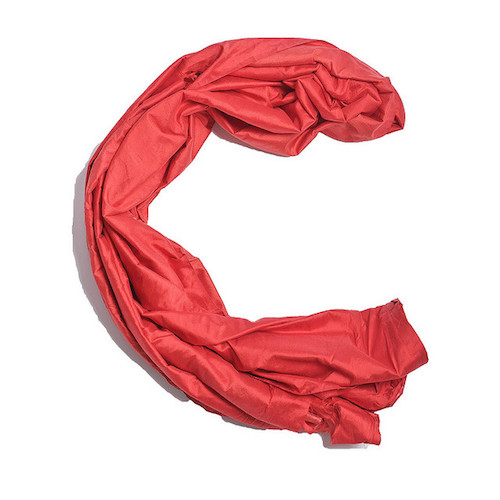Rewritten for the audio format, and with a new quote or two: here is my first foray into podcasting in which I discuss errors in printed books and how often they get fixed.
Enjoy the verbal stumbles, and my talent for voicing others’ comments. New career! 😉
Press play below or subscribe to have all episodes delivered to your device for free.
Update: The New York Times wrote an article about the growing problem of consumer complaints over errors in books.
Transcript
Welcome to Right Angels and Polo Bears, a podcast about editing English. I am Adrienne Montgomerie. On today’s podcast, I discuss errors in printed books and how often they are fixed.
A friend called me one day in obvious distress. “You are my go-to person for editorial questions,” she said. From her tone, I knew something drastic was afoot: a client who wouldn’t pay, a writer insisting on calling the bit at the front a forWARD…
A crate-load of her latest book had arrived. It was commissioned by a mainstream publisher and she was getting reading for her launch party and speaking tour. So, she had to break my #1 rule: “never open a finished book.”
The error she found was not a small one: the lines she had marked for deletion were in fact deleted, but the insert she had noted in the margin was not there. The line simply ended mid sentence, jamming into the next line without punctuation or a capital letter. It was gibberish.
“We have to reprint it,” she pleaded. “It’s really embarrassing. How can I show off this book? How can I face this woman who I profiled? It makes all of us look bad. It’s my reputation. The publisher looks bad.”
It was Friday afternoon. She had called the publisher and left a message. Now she had the weekend to stew and fret about it. Would they fix the mistake? It wasn’t a small one, and it wasn’t her fault; they hadn’t let her see the corrected pages. This was no spelling error, no split infinitive, no missing serial comma; even the kids this book was for would know this was a big boo-boo.
I spent the weekend messaging my colleagues in all aspects of publishing. I talked to managing editors, copyeditors, production coordinators and designers: “Just how common is it to reprint a book because of errors?” I asked.
What I heard was a lot of idealistic talk. Like “Missing lines would call for reprint. Duplicate pages ditto. Incorrect captions, yes probably.” That’s what Ralph Lawrence said. He is a designer and sub-editor in Australia. But a look around the bookstore shelves shows that this simply is not realistic.
We’ve all seen a major boo-boo in print: misspelled titles, white pages with “verso intentionally blank” glaring in the middle, the wrong ISBN barcode— Or how about the caption I saw in a textbook that said “replace image, do not have permission.”
One publisher ended up with a wrong phone number repeated on just about every third page in a travel guide. When I spoke to them about the error, they sounded devastated; but beyond compensating the lady who was getting all the calls, there was no attempt to correct the error.
Remember that edition of APA Style a few years back? I think it was the 6th. The one so riddled with copyediting errors and inconsistencies that users were up in arms? Yes, even the guides about creating clean copy can be filled with flubs and still refuse to reprint. In the end they offered users 8 pages of errata notes. And when the did a second printing, they fixed all those errors.
Carla Douglas remembers a copy of The Oxford Guide to Canadian English Usage that she bought 20 years ago—she is a writer and editor at the Canadian company Beyond Paper Editing. “It came with [a card apologizing] for poor ink quality”, she said. The note reasoned that “destroying many copies for this reason would be a bad environmental choice.”
Well, that’s a good point. Also, in these days where profits are so tight on books, how could scrapping a whole print run make economic sense?
Heather Down is an independent Canadian publisher: “Margins are really tight with the increased price of printing,” she said. “It would have to be a big, big, problem [for a major house] to re-print.”
That’s where small presses have the advantage.
Speaking to smaller publishers such as Down, it seems they are the ones in the position to achieve the error-free ideal. Small and on-demand print runs make the cost of fixing errors easy to absorb. Down said she tends to print very small quantities. So, if an error is noticed right away, it is changed immediately.
Demetra Turnbull is another independent publisher in the Canadian and US school markets. She says: “I am pretty strict with the number of errors in a book. I will reprint a book if there is one spelling error. When it comes to math, if there are 3 mistakes in the answers, I will reprint.”
Math answer keys are a particularly weak link the quality control chain. — I work on a lot of them. — Apparently, cookbooks are also QC bugaboos.
“Pulping a book or adding errata sheets is very rare, generally reserved for cases where legal action is likely if the text is not swiftly revised.” That’s what a manager at a major international publishing house told me. She wished to remain anonymous, as you might expect. “Some authors, particularly cookbook authors, post errata lists on their websites, since inaccuracies in cookbooks can have distressing consequences. This is why I recommend that all cookbooks be proofread at least twice.”
Robert Sawyer lamented those lingering errors. He is a scifi writer and winner of more than 26 prestigious international writing awards — “After all those editors have been over my manuscript, I can’t believe how many corrections readers send in,” he told me over dinner at a conference. (That’s not his voice either.)
No one is perfect, and even if 3 editors each apply their excellent 95% error correction rate, the odd error is bound to get through. There just is no 100% guarantee. Once the work is released out into the world, you get hundreds or thousands of fresh eyes detecting errors. You can’t afford to pay for that level of quality control. — Not to mention that there is usually only ONE proofreader, and that it isn’t every editor’s job to look for typos and errors like that.
So, Robert collects all of those reader’s notes, and those corrections are made to the paperback edition. Then he collects more corrections, and makes those to the ebook. By the time it gets to overseas editions and audiobooks, a title might actually be impeccable.
Somewhere, each possible error has been immortalized in print.
Pete Considine said “My feeling is that deciding whether to reprint or not is something like a car company deciding whether to recall a defective car or not.” Pete is a production editor at a largely academic packager in the US. “It’s all a cost-benefit analysis,” he explained. “What will it cost to fix an error versus what it may cost if it isn’t fixed.”
What happened with my friend’s book that I told you about at the start of this podcast? The publisher finally agreed to insert an errata sheet in all copies. Though the error was clearly the publisher’s fault, the cost of reprinting was simply prohibitive.
“Oh, for heaven’s sakes, a few typos never hurt a novel’s sales!” That’s what seasoned Toronto-area editor Riça Night was told by an executive back in the 80s. And — it seems — she was right. (More on that in another podcast.)
In the meantime: Pass the smelling salts.
…
You may also be interested in reading about error rates in editing, a post which provides research evidence that a 95% error correction rate is exceptionally high quality.
Thanks for listening.
You may also be interested in hearing a newer podcast about error rates in editing, a post which provides research evidence that a 95% error correction rate is exceptionally high quality. Or reading this other post about how errors (don’t) affect sales.
Audio quality increased greatly over the next couple of episodes, as I bought a real mic. Keep listening.





2 thoughts on “Listen now: podcast version of “How many errors trigger a book reprint?””